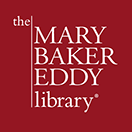What is the history of missionaries in Christian Science?
Early organized missionary work fell into two categories: dispensary work and field work.
Christian Science dispensaries began in the 1880s and operated until 1899, offering individuals unable to afford it the services of a Christian Science practitioner at little cost. Dispensaries and Christian Science Reading Rooms overlapped in their functions to the extent that both offered the religion’s literature and occasionally occupied the same quarters.
Field work included proselytizing or seeking out those with interest in Christian Science. It began in 1880, following the appointment of eight members of the Christian Scientist Association (CSA) as missionaries “to further the Cause of Christian Science.”1 The missionaries’ t report stated that Miranda Rice and Mary Damon spent two or three days a week in Boston interesting others in how Christianity healed the sick and reclaimed the sinner. People wanted to learn more about Christian Science as a result.2
In 1884 Fannie Silsbee, a student of Mary Baker Eddy, reported “a grand missionary tour” at a CSA meeting. Over three weeks she traveled more than 3,000 miles, obtaining new subscribers to The Christian Science Journal and treating nearly 100 patients.3 Several others pursued similar missionary tours during this time.4
In the October 1886 issue of the Journal, appeared a brief “Call to the ministry,” proclaiming, “There is a great need now of earnest and competent men and women as pastors and missionary preachers, whose hearts God has touched, inspiring them to feel that this is their vocation.”5 In 1888 Annie Knott wrote to Eddy: “ I have been doing a little missionary work through the State [of Michigan] this summer, and feel more and more deeply the world’s need of Christian Science; and most clearly do I perceive its adaptation to that need.”6
The 1892 reorganization of The First Church of Christ, Scientist, and the 1895 publication of the Manual of The Mother Church provided more structure for the church in Boston, as well as for branch churches. A By-Law in the Manual’s first edition titled “Board of Missionaries,” was intended “to supply sections that have no local healers or teachers in Christian Science” with “tried, faithful, loyal healers and teachers.”7 The By-Law changed the following year, instructing the denomination’s Board of Directors to “annually elect four experienced, competent, Christian Scientists for missionary work.” A missionary was expected to “do whatever is required of him, be it to fill a vacancy, or to spread the gospel of Christian Science, or to correctly propagate this Science in whatever locality it is misrepresented, or unknown.”8
In 1899 Ira Knapp, writing on behalf of the Directors, asked Eddy for guidance: “The Directors have had a few calls to send Missionaries to work in Christian Science. At present we have two calls, one from Jacksonville Ill. and one from Ellenbury Center N.Y. We know but very little of the need in these and other places that have called for missionary work. It is not quite clear to us just how far we should investigate these calls to see what the need may be. The By-law requires us to consult you in these things and if you have any word of instruction for us in this matter we should be very glad to listen to it.” Eddy responded, “You, the CS Directors must attend to this matter of missionaries according to your own best judgment.”9
In 1903 Eddy made changes to the Manual, including the By-Law about missionaries. She explained to the Directors: “‘Missionaries’… means no longer workers not called upon! but it means mental ‘Missionaries’ and their number is seven and I hope you will employ them when it is requisite. Please organize the ‘Missionaries’ as soon as the Manual is issued and explain to them what that word in our Church Manual now stands for, and tell them to be still as to it and let none but themselves know what the word signifies.” 10
Interestingly, accounts in the church’s periodicals from this time characterize Science and Health with Key to the Scriptures and the periodicals themselves as “missionaries” more often than individuals.
Another By-Law change in 1906 required that the Directors elect “not less than three experienced, competent Christian Scientists for the missionary work in Boston, Mass.” 11 A By-Law titled “Help” was also added to the section, related to providing Eddy with household help.12
The number of missionaries varied in the following years. In 1909 Eddy dropped all references to them from the Manual.13
For more by Eddy on the propagation of Christian Science, see her book Retrospection and Introspection, 86–92.
- CSA minutes, 3 October 1880 and 29 December 1880, EOR10; The Christian Scientist Association was composed of the pupils of Mary Baker Eddy
- CSA minutes, 9 February 1881, EOR10.
- CSA minutes, 3 September 1884, EOR11.
- Christian Scientist Association minutes, 1 April 1885 and 21 May 1885, EOR11.
- ”Call to the Ministry,” The Christian Science Journal, October 1886, https://journal.christianscience.com/shared/view/2huwb0ctwxc?s=t; This was likely written by the Journal’s Editor, former Methodist minister William I. Gill
- “Letters,” The Christian Science Journal, October 1888, https://journal.christianscience.com/shared/view/gztdhbt9ho?s=t
- Church Manual of The First Church of Christ, Scientist, in Boston, Massachusetts, 1st ed. (Boston: Christian Science Publishing Society, 1895), 23-24.
- Mary Baker G. Eddy, Church Manual of The First Church of Christ, Scientist, in Boston, Massachusetts, 5th ed. (Boston: Christian Science Publishing Society, 1896), 137.
- Knapp to Eddy, 8 April 1899, L00217.
- Eddy to Directors, 23 August 1903, L00350.
- Mary Baker G. Eddy, Manual of the Mother Church, The First Church of Christ, Scientist, in Boston, Massachusetts, 54th ed. (Boston: Joseph Armstrong, 1906), 93.
- “Help” is now Article XXII, Section 15.
- Directors to Eddy, 31 May 1909, L00606.

